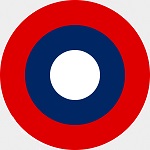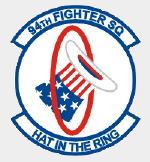Corgi AA37903 US Army Air Service SPAD XIII Fighter - Eddie Rickenbacker, 94th Aero Squadron, 1st Pursuit Group, Western Front, 1918 (1:48 Scale)
"Courage is doing what you are afraid to do. There can be no courage unless you are scared."
- Eddie Rickenbacker
 The Societe Pour L'Aviation et ses Derivas, commonly known as SPAD, was a French aircraft manufacturer responsible for producing a number of significant fighter aircraft during the First World War. Originally called Societe de production des avions Deperdussin, the company was virtually bankrupt before the war when it was rescued by Louis Bleriot who changed the name while retaining the initials.
The Societe Pour L'Aviation et ses Derivas, commonly known as SPAD, was a French aircraft manufacturer responsible for producing a number of significant fighter aircraft during the First World War. Originally called Societe de production des avions Deperdussin, the company was virtually bankrupt before the war when it was rescued by Louis Bleriot who changed the name while retaining the initials.
SPAD began by building the "A-series" of pusher two-seat biplanes. In early 1915 SPAD began development of a tractor biplane designated the "S.V" which went into production as the SPAD S.VII. Improvements in the S.VII led first to the S.XII and then to the development of the definitive SPAD fighter, the S.XIII which entered service in May 1917 and equipped French, British and American squadrons. Over 8,000 S.XIIIs were eventually built.
The SPAD was most notably flown in service by Count Francesco Baracca and Capt. Eddie Rickenbacker, two of the Entente highest scoring aces of WWI with 34 and 26 victories respectively. It was also flown by most French aces, including Georges Guynemer, one of France's most popular pilots.
Pictured here is a 1:48 scale replica of a SPAD XIII fighter flown by famed ace, Eddie Rickenbacker.
Sold Out!
Dimensions:
Length: 5-1/4-inches
Wingspan: 6-3/4-inches
Release Date: December 2008
 Historical Account: "Hat in the Ring" - Edward Vernon Rickenbacker (October 8th, 1890 - July 27th, 1973) was an American fighter ace in World War I and Medal of Honor recipient. He was also a race car driver and automotive designer, a government consultant in military matters and a pioneer in air transportation. During his lifetime, Rickenbacker worked with many influential civilian and military leaders. He had keen insight into technology, and vision for future improvements. Among other events, he participated in or observed Armistice Day on the Western Front.
Historical Account: "Hat in the Ring" - Edward Vernon Rickenbacker (October 8th, 1890 - July 27th, 1973) was an American fighter ace in World War I and Medal of Honor recipient. He was also a race car driver and automotive designer, a government consultant in military matters and a pioneer in air transportation. During his lifetime, Rickenbacker worked with many influential civilian and military leaders. He had keen insight into technology, and vision for future improvements. Among other events, he participated in or observed Armistice Day on the Western Front.
Rickenbacker demonstrated that he had a qualified replacement, and the military awarded him a place in America's second air-combat squadron, the 94th Aero Squadron, informally known as the 'Hat-in-the-Ring' Squadron. He initially flew the Nieuport 28, sometimes without weaponry, alongside French pilots. The 94th periodically faced Germany's legendary Flying Circus, led by the Red Baron, Manfred von Richthofen, until von Richthofen's death in combat. On April 21st, 1918, Rickenbacker shot down his first plane. During WWI, he and the other pilots developed important aviation principles that would serve them in civil aviation and in World War II combat.


